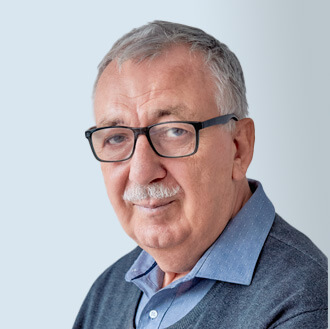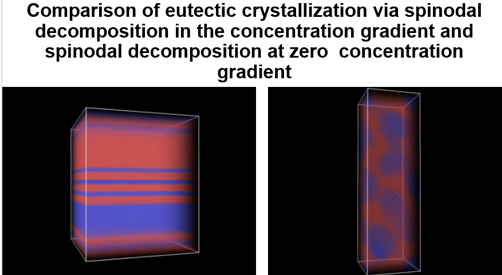I agree my information will be processed in accordance with the ENSEMBLE³ Privacy Policy.
Sign up for our newsletter
I Privacy policy |
Functional Materials Technology Group
Optical Nanocharacterization Group
Inverse Materials Design Group
Next-Generation Energy Systems Group
Biophotonic Applications Group
Solar Energy Conversion Group
Oxide Single Crystals Group
A3B5 Compound Semiconductors Group
Functional Materials Laboratory
Oxide Single Crystals Laboratory
Materials Characterization Laboratory
III-V Compound Semiconductors Laboratory
Contact
Ensemble3 sp. z o.o.
01-919 Warsaw
133 Wólczyńska St.
NIP 1182211096
KRS 0000858669
Professor Andriy Gusak

Since 1994, he was a PI of various international and Ukrainian projects, starting from long-term grant of International Science Foundation, and including INTAS, CRDF, Ukrainian-French, Ukrainian-German, Ukrainian-Russian, Ukrainian-Polish projects. In 2014-2019 he was a leader of Ukrainian team of the European project EXMONAN (Experimental investigation and modelling of nanoscale solid state reactions with high technological impact), (Poland-Ukraine-Hungary-Switzerland-France-Australia) in the frame of Marie Curie International Research Staff Exchange Scheme Fellowship within the 7th European Community Framework Programme under Grant No. 612552
Since 1996 he is a Honoured worker of science and technology of Ukraine (Award of the President of Ukraine). In 1993 - Award of American Physical Society for scientists of former Soviet Union. Substantial part of his research results was obtained during his numerous productive science visits to universities of Los Angeles, Grenoble, Singapore, Hsinchu (Taiwan), Marseille, Dijon, Debrecen, Krakow, Goettingen, Muenster, Stuttgart, Haifa, Eindhoven,
Area of expertise: Theory and models of interdiffusion and reactive diffusion in binary and multicomponent multiphase alloys, kinetics of solid-state reactions (in particular soldering kinetics, SHS kinetics), nucleation, growth and coarsening in open nanosystems, electromigration, thermomigration, thermodynamic approach to failure analysis.
Main topics are related to morphology of eutectic alloys under crystallization from liquid and vapor phases:
- Contact melting in eutectic alloys.
- Theory of liquid phase nucleation in the sharp concentration gradients at the initial stage of contact melting. Thicknesses of preliminary solid solution nanolayers before formation of first droplets at the interfaces are predicted.
- The idea of nano-modification of eutectic structures by the so-called thermal spikes (thermal shots) is suggested. Quasiperiodic nanostructure formation during fast cooling of the molten interfaces is predicted.
- Mechanisms of eutectic crystallization under fast cooling.
- New mechanism of eutectic crystallization (below some threshold temperature) via two-stage process of polymorphic freezing into unstable solid solution with subsequent spinodal decomposition is predicted.
- Shift of “quasi-eutectic alloy composition” with increasing cooling rate is predicted.
- New atomistic-scale mean-field method for modeling of crystal/liquid transformations of alloys (Generalized Stochastic Mean-Field) is developed.
- Morphology evolution and memory effects during co-deposition of binary systems from vapor phase.
- Development of home-made parameters and criteria for quantification of morphology after co-deposition.
- Mapping of basic “pure” and of “mixed” morphologies. Finding of memory effects for the case of “mixed” morphologies.
- Theory of simultaneous crystallization of amorphous phase and hollow nanostructures formation during reaction between eutectic tin-based solder and amorphous Ni-P alloy.
- Modelling of thermomigration across eutectic alloy. We found the inhibition Cu-Sn intermetallic compounds (IMCs) in flip-chip solder joints under thermal-gradient annealing.
Selected papers:
- Gusak, A., & Titova, A. (2023). Eutectic crystallization and melting in sharp concentration gradients. The Journal of Chemical Physics, 158(16).
- Gusak, A. M., Titova, A., & Chen, Z. (2023). Flux-driven transformations in open systems revisited-crystallization of amorphous Ni-P driven by reaction with Sn. Acta Materialia, 261, 119366.
- Gusak, A., & Titova, A. (2023). Synergy of grain boundary and interface diffusion during intermediate compound formation. Philosophical Magazine, 103(8), 713-732.
- Huang, Y. R., Tran, D. P., Hsu, P. N., Yang, S. C., Gusak, A. M., Tu, K. N., & Chen, C. (2023). To suppress thermomigration of Cu–Sn intermetallic compounds in flip-chip solder joints. Journal of Materials Research and Technology, 24, 7910-7924.
- Titova, A., Zapolsky, H., & Gusak, A. (2024). Memory effects during co-deposition of binary alloys. Scripta Materialia, 241, 115897.
- Gusak, A. М., & Titova, A. (2022). NEW THERMODYNAMIC APPROACHES TO FAILURE ANALYSIS IN MICROELECTRONIC MATERIALS. Cherkasy University Bulletin: Physical and Mathematical Sciences, 1(1), 33-46.
Submitted manuscripts (under review):
- A. Titova; H.R. Gopidi; A. Gusak. Models of binary alloy co-deposition at high deposition rates.
- S.Abakumov , A. Titova, A.Gusak. Fast melting and crystallization of interfaces in eutectic alloys - idea of “thermal prick”
- A.Gusak, S.Abakumov , A. Titova. Flux-driven reactions, decomposition and ordering during co-deposition of binary thin film - patterns and memory issues.








